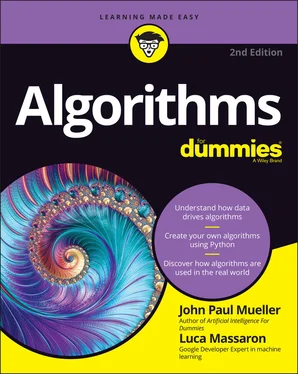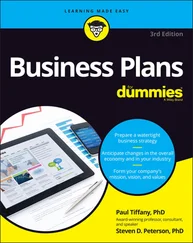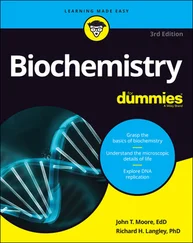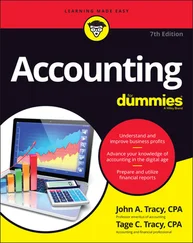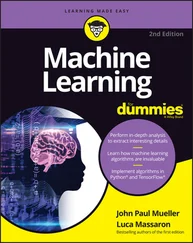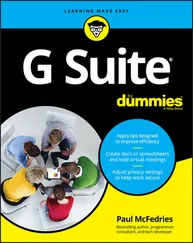John Paul Mueller - Algorithms For Dummies
Здесь есть возможность читать онлайн «John Paul Mueller - Algorithms For Dummies» — ознакомительный отрывок электронной книги совершенно бесплатно, а после прочтения отрывка купить полную версию. В некоторых случаях можно слушать аудио, скачать через торрент в формате fb2 и присутствует краткое содержание. Жанр: unrecognised, на английском языке. Описание произведения, (предисловие) а так же отзывы посетителей доступны на портале библиотеки ЛибКат.
- Название:Algorithms For Dummies
- Автор:
- Жанр:
- Год:неизвестен
- ISBN:нет данных
- Рейтинг книги:3 / 5. Голосов: 1
-
Избранное:Добавить в избранное
- Отзывы:
-
Ваша оценка:
- 60
- 1
- 2
- 3
- 4
- 5
Algorithms For Dummies: краткое содержание, описание и аннотация
Предлагаем к чтению аннотацию, описание, краткое содержание или предисловие (зависит от того, что написал сам автор книги «Algorithms For Dummies»). Если вы не нашли необходимую информацию о книге — напишите в комментариях, мы постараемся отыскать её.
Algorithms For Dummies,
Algorithms For Dummies
Algorithms For Dummies — читать онлайн ознакомительный отрывок
Ниже представлен текст книги, разбитый по страницам. Система сохранения места последней прочитанной страницы, позволяет с удобством читать онлайн бесплатно книгу «Algorithms For Dummies», без необходимости каждый раз заново искать на чём Вы остановились. Поставьте закладку, и сможете в любой момент перейти на страницу, на которой закончили чтение.
Интервал:
Закладка:
One of the most common uses of algorithms is as a means of solving formulas. For example, when working with the GCD of two integer values, you can perform the task manually by listing each of the factors for the two integers and then selecting the greatest factor that is common to both. For example, GCD (20, 25) is 5 because 5 is the largest number that divides evenly into both 20 and 25. However, processing every GCD manually is time consuming and error prone, so the Greek mathematician Euclid created a better algorithm to perform the task. You can see the Euclidean method demonstrated at https://www.khanacademy.org/computing/computer-science/cryptography/modarithmetic/a/the-euclidean-algorithm .
However, a single formula, which is a presentation of symbols and numbers used to express information or ideas, can have multiple solutions, each of which is an algorithm. In the case of GCD, another common algorithm is one created by Derrick Henry Lehmer ( https://www.imsc.res.in/~kapil/crypto/notes/node11.html). Because you can solve any formula multiple ways, people spend a great deal of time comparing algorithms to determine which one works best in a given situation. (See a comparison of Euclid to Lehmer at http://citeseerx.ist.psu.edu/viewdoc/download?doi=10.1.1.31.693&rep=rep1&type=pdf .)
Because our society and its accompanying technology are changing quickly, we need algorithms that can keep the pace. Scientific achievements such as sequencing the human genome were possible in our age because scientists found algorithms that run fast enough to complete the task. Measuring which algorithm is better in a given situation, or in an average usage situation, is really serious stuff and is a topic of discussion among computer scientists.
When it comes to computer science, the same algorithm can have multiple presentations; why do it one way when you can invent multiple methods just for fun? For example, you can present the Euclidean algorithm in both recursive and iterative forms, as explained at http://cs.stackexchange.com/questions/1447/what-is-most-efficient-for-gcd . In short, algorithms present a method of solving formulas, but it would be a mistake to say that just one acceptable algorithm exists for any given formula or that only one acceptable presentation of an algorithm exists. Using algorithms to solve problems of various sorts has a long history — it isn’t something that has just happened.
Even if you limit your gaze to computer science, data science, artificial intelligence, and other technical areas, you find many kinds of algorithms — too many for a single book. For example, The Art of Computer Programming, by Donald E. Knuth (Addison-Wesley), spans 3,168 pages in four volumes (see http://www.amazon.com/exec/obidos/ASIN/0321751043/datacservip0f-20/ ) and still doesn’t manage to cover the topic (the author intended to write more volumes). However, here are some interesting uses for you to consider:
Searching: Locating information or verifying that the information you see is the information you want is an essential task. Without this ability, you couldn’t perform many tasks online, such as finding the website on the Internet selling the perfect coffee pot for your office. These algorithms change constantly, as shown by Google’s recent change in its algorithm ( https://www.youaretech.com/blog/2021/1/26/webpage-experience-a-major-google-algorithm-update-in-2021nbsp ).
Sorting: Determining which order to use to present information is important because most people today suffer from information overload, and putting information in order is one way to reduce the onrush of data. Imagine going to Amazon, finding that more than a thousand coffee pots are for sale there, and yet not being able to sort them in order of price or the most positive review. Moreover, many complex algorithms require data in the proper order to work dependably, so ordering is an important requisite for solving more problems.
Transforming: Converting one sort of data to another sort of data is critical to understanding and using the data effectively. For example, you might understand imperial weights just fine, but all your sources use the metric system. Converting between the two systems helps you understand the data.
Scheduling: Making the use of resources fair to all concerned is another way in which algorithms make their presence known in a big way. For example, timing lights at intersections are no longer simple devices that count down the seconds between light changes. Modern devices consider all sorts of issues, such as the time of day, weather conditions, and flow of traffic.
Graph analysis: Deciding on the shortest path between two points finds all sorts of uses. For example, in a routing problem, your GPS couldn’t function without this particular algorithm because it could never direct you along city streets using the shortest route from point A to point B. And even then, your GPS might direct you to drive into a lake ( https://theweek.com/articles/464674/8-drivers-who-blindly-followed-gps-into-disaster ).
Cryptography: Keeping data safe is an ongoing battle with hackers constantly attacking data sources. Algorithms make it possible to analyze data, put it into some other form, and then return it to its original form later.
Pseudorandom number generation: Imagine playing games that never varied. You start at the same place; perform the same steps, in the same manner, every time you play. Without the capability to generate seemingly random numbers, many computer tasks become impossible.
 This list presents an incredibly short overview. People use algorithms for many different tasks and in many different ways, and constantly create new algorithms to solve both existing problems and new problems. The most important issue to consider when working with algorithms is that given a particular input, you should expect a specific output. Secondary issues include how many resources the algorithm requires to perform its task and how long it takes to complete the task. Depending on the kind of issue and the sort of algorithm used, you may also need to consider issues of accuracy and consistency.
This list presents an incredibly short overview. People use algorithms for many different tasks and in many different ways, and constantly create new algorithms to solve both existing problems and new problems. The most important issue to consider when working with algorithms is that given a particular input, you should expect a specific output. Secondary issues include how many resources the algorithm requires to perform its task and how long it takes to complete the task. Depending on the kind of issue and the sort of algorithm used, you may also need to consider issues of accuracy and consistency.
Finding algorithms everywhere
The previous section mentions the toast algorithm for a specific reason. For some reason, making toast is probably the most popular algorithm ever created. Many grade-school children write their equivalent of the toast algorithm long before they can even solve the most basic math. It’s not hard to imagine how many variations of the toast algorithm exist and what the precise output is of each of them. The results likely vary by individual and the level of creativity employed. There are also websites dedicated to telling children about algorithms, such as the one at https://www.idtech.com/blog/algorithms-for-kids . In short, algorithms appear in great variety and often in unexpected places.
Every task you perform on a computer involves algorithms. Some algorithms appear as part of the computer hardware. The very act of booting a computer involves the use of an algorithm. You also find algorithms in operating systems, applications, and every other piece of software. Even users rely on algorithms. Scripts help direct users to perform tasks in a specific way, but those same steps could appear as written instructions or as part of an organizational policy statement.
Daily routines often devolve into algorithms. Think about how you spend your day. If you’re like most people, you perform essentially the same tasks every day in the same order, making your day an algorithm that solves the problem of how to live successfully while expending the least amount of energy possible. After all, that’s what a routine does; it makes us efficient.
Читать дальшеИнтервал:
Закладка:
Похожие книги на «Algorithms For Dummies»
Представляем Вашему вниманию похожие книги на «Algorithms For Dummies» списком для выбора. Мы отобрали схожую по названию и смыслу литературу в надежде предоставить читателям больше вариантов отыскать новые, интересные, ещё непрочитанные произведения.
Обсуждение, отзывы о книге «Algorithms For Dummies» и просто собственные мнения читателей. Оставьте ваши комментарии, напишите, что Вы думаете о произведении, его смысле или главных героях. Укажите что конкретно понравилось, а что нет, и почему Вы так считаете.
